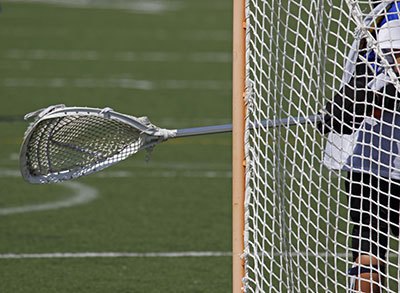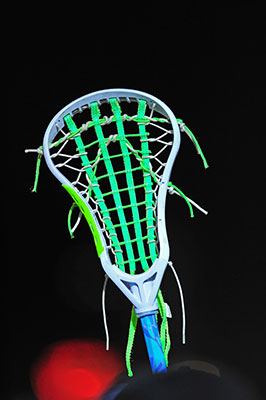As the lacrosse season for 2023 approaches, it's time to get serious about your equipment and skill set. One essential task that you'll have to master is how to pinch a lacrosse head.
Pinched lacrosse heads can be intimidating because it involves using tools such as pliers, cutting devices, and other hardware items for the pinched gear. But if you approach the task in an organized manner with quality materials, there are plenty of ways to successfully pinch a lacrosse head before the start of the 2023 season.
In this blog post, we'll discuss what tools will be needed, tips and tricks on how best to pinch a lacrosse head successfully, and why it's an excellent option for many lacrosse players.
More...
Take Away Key Points:
Top Tips for a Successful Pinched Lacrosse Head
1. Choosing the pinch design of a lacrosse head
When choosing the pinch design of a lacrosse head before pinching it, it's important to consider several factors. The most popular pinches are the V-pinch, the Mid-pinch, and the Top-pinch.
The V-pinch is best for attackers who need maximum control and accuracy when passing or shooting. It provides a higher pocket depth and improved hold on the ball compared to other pinches.
The Mid-pinch is best for defensive players who need a tighter grip on the stick and more stability when checking opponents. It also has deeper pockets for better ball retention in transition play.
The Top-pinch is great for middies because it allows for quick ball release with minimal effort while still providing plenty of power when shooting or passing from far away.
When choosing which head pinch is right for you, consider your playing style and position on the field, and practice with different pinches to find one that suits your needs.

2. Select the pinch degree
When selecting the pinch degree of a lacrosse-pinched head before pinching it, your goal should be an even and consistent shape without compromising power or control. The key is to find the right balance between comfort and performance.
The most common pinch degrees include shallow, medium, and deep pinches. A shallow pinch creates a more open pocket with improved ball release but lower accuracy while shooting or passing. Alternatively, a deep pinch offers increased accuracy and stability when cradling or checking your opponent's stick.
When choosing which pinch degree is right for you, consider what type of move you are trying to achieve with the ball. If you need quick releases when shooting, a shallow pinch may be best for you. If your goal is accuracy and control when dodging and passing, then a deeper pinch may be more suitable. Try experimenting with different depths until you find the one that works best for you.
3. Gather the essentials
With a pinched head, having the right tools on hand is important to ensure you get the best results. Many will wonder:
How to pinch a lacrosse head with mesh?
No need to worry! Here are some of the necessary tool essentials:
- A vise or clamp: This is used to secure the head during pinching and ensure that the head holds its shape while tightening.
- Pinch pliers: These pliers allow you to pinch the plastic around the screw holes of the picked lacrosse heads to create an even shape. You can also use a knife tip, but we advise caution!
- Pocket gauge: This lets you measure how deep you need to pinch to achieve the desired pocket depth.
- Lacrosse string kit: This includes all of the necessary strings, nylons, and leathers for traditional stringing or specialty stringing techniques for finishing touches.
4. Lock in the pinch & secure it
Finally, once you decide on and test the desired pinch depth for your lacrosse head, it's time to lock and secure the pinch. Here are some steps to ensure that your pinch is locked in:
- Use pliers to pinch each side of the head until it is securely tightened. Be sure not to over-tighten, or you may experience problems with strength and maneuverability.
- Once you are satisfied with the tension on both sides of the head, use a pocket gauge to measure your pinch's depth. This will help you determine if additional pinching is necessary or if any adjustments need to be made.
- To secure the pinch, loop the string around the head at all four corners. Pull tight and knot off at each corner before testing your new pocket shape on a ball. You can also use zip ties to keep the original shape of the perfect pinch.
- When you are satisfied with your creation, use clamps or clips to hold the strings in place while letting them dry overnight. This will ensure that the strings stay locked in place and don't move when using the stick for actual gameplay.
5. Put the lacrosse head into boiling water
Putting lacrosse heads into boiling water after pinching is an important step in the pinching process. This will help to set and lock in the desired pinch size and shape. Here are some steps to help guide you through this process:
1. Prepare a pot of boiling water. Make sure that it's large enough to fit the entirety of your pinched lacrosse heads.
2. Carefully place the pinched lacrosse heads into the boiling water, ensuring all parts are submerged completely. Be sure to use a utensil such as tongs or a wooden spoon to avoid getting burned by the hot water.
3. Let your pinched lacrosse heads sit in the boiling water for 5-7 minutes to ensure it sets properly. You can even boil the head for two and a half minutes.
4. When time is up, remove your pinched lacrosse heads from the hot water and set them aside on a wire rack or towel for cooling. Make sure to use rubber or oven mitts when taking out the head from the water.
5. Once cooled, you can begin testing out your new pocket shape on a ball!
6. Freezer time!
Putting a pinched lacrosse head into the freezer is an important step in the pinching process. This will help to set and lock in the head pinch size and shape, as well as add extra durability. Here are some steps to help guide you through this process:
- Place the lacrosse head onto a tray and put it into the freezer. Make sure that all parts of the lacrosse head are lying flat and not touching anything else.
- Leave it there for at least 8 hours or overnight for best results. This will allow for enough time for the string to freeze and lock in your desired pocket shape.
- When ready, remove your frozen lacrosse head from the freezer and set it aside on a wire rack or towel until wholly thawed out. Once thawed, you can begin testing out your new pocket and new shape on a ball!
7. Return of the mesh

Returning the mesh after pinched lacrosse heads have been in the freezer is necessary for preserving the shape of your pocket. Here are some steps to help guide you through this process:
- Once your lacrosse head is thawed out and ready, place it upside down on a flat surface with one side exposed.
- Carefully pull the string threads around your desired pocket shape and position them evenly. Make sure that all mesh parts are pulled tight to remain in place when you reattach the top of the head.
- Reattach both sides of the lacrosse head and secure it tightly with string or rubber bands until completely secured.
- Check to ensure everything is locked in before testing out your new pocket shape on a ball!
FAQs
What is pinching in lacrosse?
Pinching in lacrosse involves deforming or bending the plastic on a lacrosse head to create a pocket. The pocket shape created can vary greatly, depending on its intended use and personal preferences. Picking both sides of the head evenly is relevant so the resulting pocket isn't too tight or loose.
How do you reshape a lacrosse head?
Start by removing the mesh from the head and putting it aside. Depending on your situation, you may also need to remove any strings or rubber bands from the head as well.
Place the head onto a tray and put it into the freezer. Make sure that all parts of the head are lying flat and not touching anything else. Leave the head there for at least 8 hours or overnight for best results. This will allow for enough time for the string to freeze and lock in your desired pocket shape.
When ready, remove your frozen lacrosse head from the freezer and set it aside on a wire rack or towel until completely thawed. Once thawed, carefully pull the mesh threads around your desired pocket shape and position them evenly. Make sure all mesh parts are pulled tight to remain in place when you reattach the top of the head.
How to boil a lacrosse head?
Begin by filling a pot or bucket with water and boiling it. Your pot or bucket must be large enough to submerge the entire lacrosse head in the boiling water.
When the large pot of water has reached a rolling boil, carefully drop in your lacrosse head (string side down) and make sure all parts are submerged in the liquid. Allow it to sit for approximately 10 minutes or less (two and a half minutes).
After 10 minutes, turn off the heat and gently remove your lacrosse head from the boiling water with tongs or a pair of rubber gloves. Run it through cold water to cool the scoop altogether.
How to unpinch a lacrosse head?

Start by removing the mesh from the head and putting it aside. Depending on your situation, you may also need to remove any strings or rubber bands as well.
Place the pinched head onto a flat surface with one side exposed, such as a table or countertop. Then, with both hands firmly gripping the sides of the head, use your fingers to carefully pinch down on either side of the top of the throat. Ensure that you pinch both sides evenly to remain symmetrical when finished.
Continue to hold steady pressure while bending back towards the side wall until you can feel that both sides are evenly bent outwards. The goal is to create an even gap between each side of the top of the throat so that all parts of the mesh can move freely when attached.
Once you have achieved your desired shape, carefully pull the mesh threads around your desired pocket shape and position them evenly.
How do you tighten a lacrosse head?
Begin by ensuring the pinched head is empty of strings or rubber bands before tightening.
With one hand, firmly hold down the sidewall of the head while using your other hand to grab the opposite side. Gently pull both sides outward until they meet in the middle. This will create an even gap between each side, making a snug fit when connected again.
Now, slide the mesh over the top edge and ensure it's well-positioned around your desired pocket shape. Finally, securely attach both sides of the head with string or rubber bands, ensuring that everything is locked in tight before testing on a ball.
You can also tighten the pinch of the head with zip ties and still keep your stick legal.
Conclusion
Whether you're a beginner or an experienced player, how to pinch a lacrosse head is an important skill to master. However, it's a relatively straightforward process with the right tools and knowledge.
Following these basic instructions should ensure that your pocket is secure and durable and provides optimal performance on the field!
